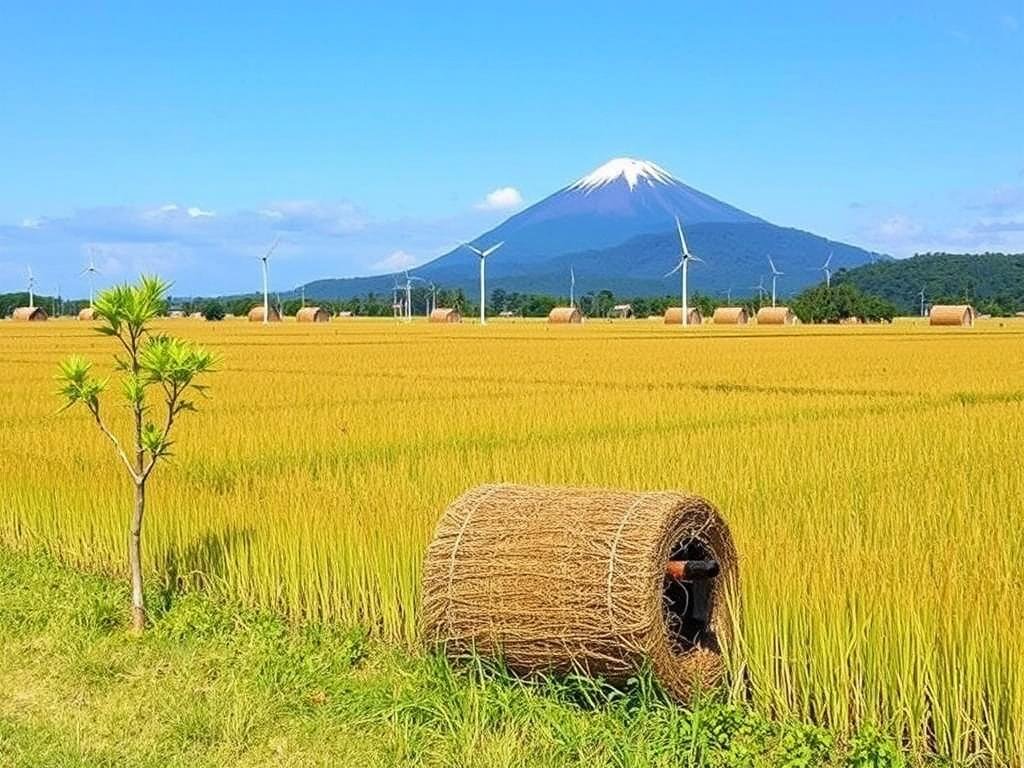Tandan Kosong Kelapa Sawit for Biomass Energy in Japan: An Ultimate 2025 Guide
Table of Contents
- 1. What is Tandan Kosong Kelapa Sawit (TKKS)?
- 2. Japan’s 2025 Renewable Energy Landscape
- 3. Feasibility of TKKS for Japan’s Biomass Sector by 2025
- 4. Processing TKKS into a Viable Energy Source for Japan
- 5. The Critical Role of Sustainability Certification
- 6. High-Quality Palm Products Provider
- 7. Conclusion: A Promising but Conditional Future
As the global push for renewable energy intensifies, nations are exploring innovative and sustainable fuel sources. This guide examines the feasibility of using Tandan Kosong Kelapa Sawit for biomass energy in Japan, a topic of growing importance as the 2025 energy milestones approach. As Japan seeks to reduce its carbon footprint, this abundant agricultural residue from the palm oil industry, known as TKKS, presents a compelling opportunity.
What is Tandan Kosong Kelapa Sawit (TKKS)?

Tandan Kosong Kelapa Sawit (TKKS), or Palm Oil Empty Fruit Bunches (EFB), is the fibrous residue remaining after fruitlets are stripped from an Oil Palm Fruit Bunch in the mill. This material is a significant by-product, constituting over 20% of the fresh bunch’s weight.
Once considered waste for incineration or mulch, TKKS is now valued for its energy potential. Its key characteristics are a high moisture content (60-70%), dense fiber, and a substantial calorific value once dried. These properties make it a prime candidate for bioenergy conversion, which is central to evaluating its potential for Japan’s energy needs.
Japan’s 2025 Renewable Energy Landscape
Following the 2011 Fukushima disaster, Japan overhauled its energy policy to significantly boost the share of renewables in its electricity mix. Government initiatives like the Feed-in Tariff (FIT) and Feed-in Premium (FIP) have spurred massive investment in clean energy, including solar, wind, and biomass.
Biomass is particularly prized for its ability to provide stable, baseload power, a distinct advantage over intermittent solar and wind. Consequently, Japan has become a top global importer of biomass fuels like wood pellets and Palm Kernel Shell (PKS). For official details on Japan’s energy strategy, refer to the Japanese Ministry of Economy, Trade and Industry (METI).
This relentless demand pressures suppliers to discover new, sustainable, and cost-effective sources, making TKKS a compelling next-generation fuel for Japan’s biomass market.
Feasibility of TKKS for Japan’s Biomass Sector by 2025
Assessing the viability of TKKS for the Japanese market requires a balanced view of its powerful advantages against its considerable challenges.
Advantages and Opportunities
- Vast and Underutilized Supply: Indonesia and Malaysia, the world’s leading palm oil producers, generate millions of tons of TKKS annually. This represents an enormous, largely untapped resource for bioenergy.
- Cost-Effectiveness: As an agricultural residue, raw TKKS is inherently low-cost. Even after processing, it can be more economical than premium wood pellets, a critical factor for Japanese power producers.
- Waste-to-Energy Model: Utilizing TKKS prevents it from decomposing in landfills and releasing methane, a potent greenhouse gas. This “waste-to-energy” approach enhances the environmental profile, a concept supported by numerous life cycle assessments found on platforms like Google Scholar.
Challenges and Hurdles
- Logistics and Pre-processing: The high moisture and low density of raw TKKS make long-distance transport economically unviable. It must be processed into denser, drier forms like pellets or briquettes, which requires significant investment in technology and infrastructure.
- Technical Specifications: Japanese power plants adhere to strict fuel quality standards for ash, chlorine, and calorific value. Poorly processed TKKS can fail these criteria, risking boiler damage and inefficiency.
- Sustainability Verification: The palm oil industry faces intense scrutiny over deforestation and labor practices. Any biomass from this sector, including TKKS, must have robust sustainability certification to be accepted in the Japanese market.
Processing TKKS into a Viable Energy Source for Japan

The key to unlocking the potential of TKKS lies in transforming it into a standardized, high-quality fuel. This process involves several critical stages: dewatering, shredding, drying, and pelletizing. The broader palm oil industry, which produces Crude Palm Oil as its primary product, is increasingly investing in these downstream capabilities.
Pelletizing TKKS converts the bulky, wet biomass into dense pellets with low moisture (under 10%) and consistent energy value. From the Palm Kernel to the empty bunch, the entire harvest can be optimized. These EFB pellets are ideal for co-firing in coal plants or for use in dedicated biomass facilities in Japan. Advanced pelletizing technology is the cornerstone for the success of TKKS in this market.
The Critical Role of Sustainability Certification
For Japanese buyers, sustainability is non-negotiable. The entire supply chain for TKKS pellets must be transparent and verifiable. Certifying bodies like the Roundtable on Sustainable Palm Oil (RSPO) ensure that production adheres to strict environmental and social standards. Additionally, biomass-specific certifications like the Green Gold Label (GGL) are often required to prove the fuel meets sustainability and greenhouse gas reduction targets.
Without these certifications, the risk of reputational damage and regulatory non-compliance is too high. Therefore, the successful integration of TKKS into Japan’s energy portfolio is intrinsically linked to adopting these global standards.
High-Quality Palm Products Provider
Makmur Amanah Sejahtera provides high-quality palm products such as Palm Kernel Expeller, Palm Kernel Shell, Crude Palm Oil, Palm Kernel Oil, etc. Kindly contact us at WhatsApp +6282140002198 or email us at admin@makmuramanah.co.id.
Conclusion: A Promising but Conditional Future
So, is using Tandan Kosong Kelapa Sawit for biomass energy in Japan truly feasible by 2025? The answer is a conditional ‘yes’. The potential is undeniable, given its abundance and waste-to-energy benefits. However, success hinges on overcoming the logistical and sustainability hurdles.
The 2025 outlook depends on continued investment in processing facilities to produce high-grade EFB pellets and the establishment of fully transparent, certified supply chains. With Japanese companies already investing, the pathway is being paved. If these conditions are met, TKKS could become a significant and competitive player in Japan’s diverse renewable energy portfolio.
